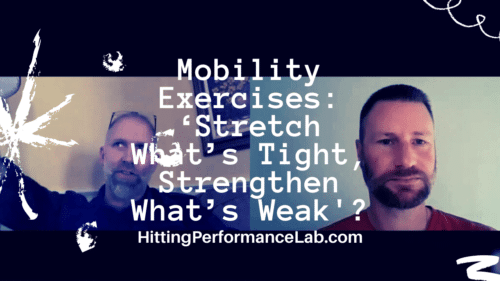Mobility Exercises: Gain an Average Of FIVE To SIX-mph Ball Exit Speed In A Couple Sessions Using Square1System
Mobility exercises interview with Shawn Sherman of Square1System discusses the following:
- What is the origin of the Square1System?
- What is your elevator pitch for the Square1System?
- Where was that mobility exercises aha moment where you saw the rabbit hole, then you started digging?
- Why is the traditional model of ‘stretch what’s tight and strengthen what’s weak’ not so effective?
- What does the mobility exercises timeline look like using your system? When do you see the benefits?
- After using your system, what are you seeing on the ball exit speed increase for hitters and the velocity increase for pitchers?
- What does the fixing movement compensation look like?
- What has your experience been with Tommy John, maybe athletes that are looking at that or have that?
This interview is one of twenty-four featured expert interviews in my new book, . The following is the transcribed video of the above mobility exercises video. Enjoy!
Joey Myers 00:06
Hello, and welcome to the Swing Smarter Newsletter Monthly. This is your host Joey Myers from hittingperformancelab.com. With me today, this is the second time that we’ve talked in person, we did a phone chat, I think for almost an hour or maybe a little bit more, with Shawn Sherman, so first of all, I want to welcome you to the show.
Shawn Sherman 00:25
Thanks for having me. I’m excited to be here, it’s great to get reconnected with you, and I’m looking forward to this conversation.
Joey Myers 00:30
Very cool. Shawn’s website is square1system, system or systems?
Shawn Sherman 00:36
Singular
Joey Myers 00:38
Square, the number one, without the hashtag, square1system.com. I want to dive in a little bit to what Shawn is doing, because I think it’s very interesting when it comes to moving better to perform better.
Joey Myers 00:54
It is something I think that is new to a lot of you out there. There are some mobility exercises that are similar, but I think Shawn’s doing something. What’s cool is he’s found this out on his own in his own curiosity.
Joey Myers 01:08
As most of you know, I love finding passionate curiosity within other coaches and things like that out there. First, Shawn, explain where square1system is, so people can remember and put your website and figure out where that origin was. What’s the origin of that?
What is the origin of the Square1System?
Shawn Sherman 01:26
The origin of the name or the whole system?
Joey Myers 01:29
How did you come up with that name first?
Shawn Sherman 01:30
I came up with the name because I used to have a name for the system called reset, and a mutual friend of ours, Brian Eisenberg. He was the one that said, “Hey, this is awesome”.
Shawn Sherman 01:40
I was at Pitchapalooza, this would have been about four years ago. It worked on Brian and his son, and it worked on Chris Bryant’s dad, we helped him with some pain.
Shawn Sherman 01:50
We were all sitting around, having a little powwow after the first day at pitchapalooza. Brian’s a very complimentary, such a helpful guy, such a cool dude. He was like, “Can I give you some criticism?”
Shawn Sherman 01:59
I’m like, yep. “Is the name reset? You need a better name”. I thought that’s the only thing that was complete, and so he encouraged me to get a new name. I had a group of my clients and friends that are really into marketing, and it wasn’t going anywhere.
Shawn Sherman 02:15
My one friend, Patti, she checked back in, we hadn’t communicated about three or four days. She asked, how’s the name going? And I’m like, “nada”. She went “Oh, it’s back to square one”. Sounds like a happy accident.
Joey Myers 02:30
Wow, that’s cool.
Shawn Sherman 02:31
Yeah
Joey Myers 02:32
I did not know that. That’s cool. I like that. I liked reset before, after we talked to have a good idea of what you do when it comes to mobility exercises, but that makes sense, when you say back to square one, square one systems. I love it.
Joey Myers 02:45
Now, let’s go into that a little bit. What’s the elevator pitch of what you’re doing? Like a Pitchpalooza, you have a booth there, and somebody comes walking up and says, “What is square one system?”
What is your mobility exercises elevator pitch for the Square1System?
Shawn Sherman 02:56
That’s the hardest question that everybody asks me, it seems so easy, but I think since we’re kind of tapping into some new grounds, that’s a really difficult question. It’s one of the things I’ve been struggling for years.
Shawn Sherman 03:05
I would say as briefly as I possibly can, my mobility exercises elevator pitch would be, we are basically trying to identify where your sixth sense proprioception, this internal feel, where there are deficiencies with your proprioception.
Shawn Sherman 03:23
We’re able to identify and pinpoint where you are individually, having an issue between your brain, your body parts and the ground, and we’re able to restore that perception from unsafe back to safe.
Shawn Sherman 03:38
When we restore unsafe perceptions back to safe, there’s less of a need of the human body and the brain to compensate. Therefore, we’re able to help people that are post-surgical and have rehab issues to the best athletes in the world, because all of us have some flawed perceptions in this area of proprioception, we’re able to restore that, get it back closer and closer to our optimal design.
Shawn Sherman 04:02
The ramifications of that are, you know, increase exit velocity for hitters, increase throwing velocities for throwers, and less aches and pains, better mobility, and all the other good stuff that we all want to get out of exercise.
Shawn Sherman 04:16
What we’re doing is we’re not a replacement for exercise, we’re just this missing prerequisite step, we’re just kind of moving this continuum of movement from left to right.
Shawn Sherman 04:25
We’re just adding on a little bit in the front end, where we’re just going a little deeper than we think other systems that are currently existing out there. That’s a long mobility exercises elevator speech, sorry.
Joey Myers 04:35
That’s okay. It was interesting. What were some of the aha moments where you know you’re in the strength conditioning field and I don’t know if you started down that path of where you’re at now, I’m sure maybe you’ve stumbled on to it like a lot of us have.
Joey Myers 04:49
Where was that aha moment where you saw the rabbit hole, then you started digging? What was that? Where you saw the rabbit hole?
Where was that aha moment where you saw the rabbit hole, then you started digging?
Shawn Sherman 04:56
It’s so funny. Absolutely, that we’ve had these different moments. That on very well, that’s awesome.
Shawn Sherman 05:10
My moment was, I was using this other mobility exercises system, and that other system was very much centered around this idea that restrictions and range of motion are always protective muscle guarding.
Shawn Sherman 05:23
That’s true, a lot of the time, protective muscle guarding is a very real issue that we all have.
Shawn Sherman 05:30
The system I was using, I was helping a lot of people with that, but I had this one client, that was not getting good results with that system. I was always trying to help them, and I just really kept doubling down and tripling down, and doing it with more gusto, but we weren’t getting anywhere.
Shawn Sherman 05:47
What happened was, I took the opposite mobility exercises approach. I started thinking well, this isn’t working, why not just do the polar opposite of what I was trained to do?
Shawn Sherman 05:56
This guy’s name is Alan, instead of viewing Alan’s issues as protective muscle guarding, I don’t, at that point, I didn’t know what the other side of the coin was, but I did kind of pursued the other side of the coin, now I would say, it’s probably like a joint impingement would be the polar opposite of protective muscle guarding.
Shawn Sherman 06:12
I didn’t know that at the time, I just knew I got to try something different. Let’s just do the polar opposite, and when I did that with him, he had a pain alleviation. He had this issue of back pain, hip pain for over 20 years. All his pain was gone.
Shawn Sherman 06:24
He started standing two or three inches taller, and he played golf that next morning, it took 12 strokes off the best round of golf he’s shot since the late 80s. I didn’t believe in that verse, I thought he’s just calling me up and just yanking my chain, but that was the impetus moment.
Shawn Sherman 06:40
Wow, I did the opposite of what quote unquote, they told me to do, and end up having the best result I’ve ever had with a client.
Shawn Sherman 06:48
Basically, the reality of “whoa, you’re really onto something here” just slapped me right in the face. I didn’t know what was going on, I just knew the opposite mobility exercises approach, and that just pushed me to dig in further and further and try to come up with an explanation as to what I unwittingly kind of happen across, it’s how it happened. It was a happy accident.
Joey Myers 07:10
I think the traditional model, and maybe what you’re talking about is the stretch, you know, when you have a joint that’s being protected, and then you get a tight muscle on one side, and then you get to the muscle that gets really long.
Joey Myers 07:24
It’s this relationship between length and length-tension relationship. The traditional model is typically to stretch out the tight muscle and to power up the weak muscle or the muscle that’s been stretched too much.
Why is the traditional model of ‘stretch what’s tight and strengthen what’s weak’ not so effective?
Shawn Sherman 07:43
Everybody thinks “it’s stretch what’s tight, strengthen what’s weak”. It sounds good on a T-shirt, but that doesn’t work on a lot of people. If that works, then why are these rehab cycles taking months and months to relieve back pain?
Shawn Sherman 07:54
Why does someone have a recurring restriction issue? Like, why don’t I stretch this guy 300 days in a row? Why is it still coming back?
Shawn Sherman 08:02
It is all about length tension relationships, but what we’re uncovering more and more is if we can get the brain to perceive that all of our joint actions are safe in relationship to when there’s ground contact, we’re going to get this effect to last longer.
Shawn Sherman 08:16
Stretch what’s tight, strengthen what’s weak, that’s not saying that it’s wrong, it’s just that it’s not always correct. How’s that?
Joey Myers 08:24
Yes, I like that. Like you explored every different mobility exercises avenue and all that kind of stuff. The stretching and it just takes forever, if anything, to get there.
Joey Myers 08:34
I know, there’s a couple of gymnastic programs that are online and major stretching stuff, and you got to spend 45 minutes to an hour, and you’re stretching, and you got to do it like two times a week, like a split stretch where you’re working a lot of hamstring stuff, and you got to do it two times a week, and those are brutal.
Joey Myers 08:54
When you take your system, how long are you talking? Like hour long sessions? How many times a week?
BREAKING NEWS:
Grab two chapters of our NEW Amazon book FREE...
What does the mobility exercises timeline look like using your system? When do you see the benefits?
Shawn Sherman 09:03
It depends on the population I’m working with. I have a little studio in the suburbs of Chicago, so my clients, the word of mouth primarily, they said they find me, I do hour long sessions with those folks.
Shawn Sherman 09:18
Versus if a team hires me to come in eight-hour day, I might have to work on 25 guys, then it might get 20-minute session. We do a lot of anywhere from 15-20 minutes up to an hour-long session.
Shawn Sherman 09:31
In private practice, people come in and see me, a lot of times they have pain, I typically start everybody off with a three-session package. I start off our relationship with three one-hour sessions, and then if they want to hire me to take him through some exercise stuff, that’s great.
Shawn Sherman 09:46
Just for the square one stuff, we’re making some really killer progress and somewhere between one and three hours. When teams hire me, these guys are young, they’re younger, they’re healthier population who find me personally, we’re seeing fantastic results in 15 minutes-20 minutes.
Shawn Sherman 10:04
Because once we change that perception, what happens is the brain doesn’t have to govern back the throttle, it literally can make that true athlete gets to come out.
Shawn Sherman 10:14
Kind of back to what we were saying earlier, it takes a long time, 45 minutes to change tissue. 45 minutes a day for six weeks, eight weeks, 12 weeks to start changing tissue for a more long-term basis, but if we can get the brain to not perceive that the ground is a threat, the changes are pretty much instantaneous.
Shawn Sherman 10:32
We start seeing range of motion changes occur within the first two, three minutes with the mobility exercises. As we work through layers and layers of compensation, the effect starts being longer lasting probably after 20 or 30 minutes session.
Shawn Sherman 10:47
Again, not a long answer for you, I’ll say anywhere between 30 minutes and two or three hours, we have a person in a pretty good place, and that’s really on a maintenance program.
Shawn Sherman 10:55
That would vary on the individual what maintenance might look like. Most of my clients, I see them a couple, two-three times a year, and I’d say “hey, come back in”, because they might be working with another strength coach or another personal trainer.
Shawn Sherman 11:07
I’m not trying to take anybody else’s business; I want to be the guy that’s kind of fill some gaps and be a resource for these other professionals out there.
Joey Myers 11:14
Yes, and what I want people to understand, when I went into training people and fitness and things like that, I took more of the corrective science route. I know it’s fun to help people lose weight, and all that kind of stuff, but I think there’s more problem solving and things that go on.
Joey Myers 11:30
I like to use the brain power a little bit more when people come in, they got a shoulder issue or whatever. Going through that mobility exercises rabbit hole, I feel is a lot better.
Joey Myers 11:42
When you’re working with somebody, just to give people an idea of ball exit speed, like on average, what you see change wise. How much work that you work on somebody?
Joey Myers 11:51
If it’s 15 minutes, half hour, and you don’t have to break it down that much, but just as an overall ballpark? What are you seeing on the ball exit speed increase for hitters and the velocity increase for pitchers?
After using your system, what are you seeing on the ball exit speed increase for hitters and the velocity increase for pitchers?
Shawn Sherman 12:02
Specifically, baseball players, I used to be on staff with the Chicago Cubs. My last year with the Cubbies, that occurred right after that impetus moment. Those guys in a 09, because my impetus moment was in 08, and that Cubbies team, they had access to the early version of this.
Shawn Sherman 12:21
Most of our data that we’ve collected has been on high school and up to D1 hitters and throwers. We’ve gone in there, and we’ve given each of these guys 10- or 15-minute sessions.
Shawn Sherman 12:34
Typically, with exit velocity, which we’ve seen more of, we haven’t done as much on throwers, but on exit velocity, I know with this one community college, I think we worked on 12 or 13 hitters.
Shawn Sherman 12:45
Of those 12 or 13, we had one guy where there’s no change, it didn’t get worse, it just stayed the same, but the other 11 or 12 guys all improved somewhere between two mile an hour exit velo and 15.
Shawn Sherman 12:57
I think there were two or three of the guys who were double digits. It was not the majority; our expectation isn’t everybody’s going to hit 10 or 12 or 15 mile an hour harder. But about 20 or 25% of the guys are going to probably experience eight to 12 mile per hour harder.
Shawn Sherman 13:11
We averaged, I think it was five or six miles per hour. We’re talking some really serious changes.
Shawn Sherman 13:19
Before you’re rolling here with Ryan Johansen, who’s with the White Sox, he has his own private studio. We’ve had, we’ve had some crazy numbers there. We’ve had guys that after two or three sessions, where we’ve seen 12-13-14 mile an hour increases.
Shawn Sherman 13:33
We had a thrower there, there’s a high school kid, and I’m more about movements, I don’t care if I’m working on football, basketball, grandma just had a hip replacement, I’m just really going to help people move better, so I might be mistaken here.
Shawn Sherman 13:48
But we had just one high school thrower, and I believe he was kind of an average high school kid, probably an average starter. This guy is not getting looked at by pro teams or anything.
Shawn Sherman 13:58
His average throwing velocity was I think at 81.3. That’s probably good, but not amazing. Is that accurate?
Joey Myers 14:11
Yes.
Shawn Sherman 14:12
If he can get a little few more mile an hour and have some opportunities in college probably, but it was 81.3, so we started working on them, and we did a 20 or 25 minute session, and there were multiple coaches around the table.
Shawn Sherman 14:24
What we started doing was, I’m explaining what I’m doing. In 25 minutes, I probably only did about 10 or 15 minute mobility exercises work as I wanted to educate these guys as well.
Shawn Sherman 14:32
We had a bullpen, we threw I think 35 or 38 throws, and I might be off by a smidge, but I think it was his first 17 throws were all PRs. Everything he threw was 81.4 or higher.
Shawn Sherman 14:46
In that bullpen, out of those 35 or 38 throws, all but three or four were personal best. He hit like 83 on change, 84 on change. I proceed to see him for a session maybe 10- or 15-minute session once a week.
Shawn Sherman 15:01
Within five weeks he was up to, I think it was 88.9, about eight mile an hour.
Joey Myers 15:06
Wow
Shawn Sherman 15:09
Maybe he had four to six, 10-to-15-minute sessions. Maybe an hour and a half, two hours of work spread out over four to six weeks. That was at Johansen’s place there in Elgin, Illinois.
Joey Myers 15:22
That’s taken a guy from NAIA at that 81 miles an hour up to 88. Now we’re talking D1, I don’t know if he’s a lefty or a righty.
Shawn Sherman 15:32
I’m pretty sure he’s a lefty, too. I could be mistaken, but quite sure the left versus man is extra excited too.
Joey Myers 15:38
80-88 is a lefty, it’s definitely D1 and possibly professional. I want people to understand what that shift in that, I guess the ability for them to move better without compensation.
Joey Myers 15:54
What first caught my attention, I think Brian Eisenberg, he retweeted something that you had tweeted, and it was to the effect of the best hitters or the best athletes will do things with less compensation or less getting off the path, and the more amateur athletes, compensation wise, will put numbers to it.
Joey Myers 16:15
If something like 55 different pathways outside of the most efficient were the best, like LeBron James and probably Miguel Cabrera, and Mike Trout, those guys end up around seven different deviations off the normal. Can you talk about that a little bit?
What does the fixing movement compensation look like?
Shawn Sherman 16:30
I can’t remember if those numbers came from something I had posted or if I was using some arbitrary numbers, I can’t remember.
Shawn Sherman 16:40
I use the analogy all the time, like the GPS, so guys like us, we’re not that old, but we can remember when we first got our licenses. If you want to drive out of state, you get a roadmap, and you have your buddy with you on the road trip, and he’s telling you to go here, to go there with this GPS thing.
Shawn Sherman 16:56
What we do is we pop in our destination, and bounces these images, these signals off satellites, and it says, check it out, there’s some traffic ahead or there’s construction, it’s going to take longer, but it’s still going to give you the most efficient course in light of the obstacles ahead of you.
Shawn Sherman 17:12
That’s how we all operate. We have all sprained ankles, we’ve all fallen out of bed, we’ve had different stress exposures over life. That’s really at the core and heart of what causes us to rewire around these optimal efficient pathways. None of us are immune to it.
Shawn Sherman 17:27
If we have to take the long way around the barn, or you have to take the long way to get from point A to point B, you have really one choice, all you can do is just drive faster, and get more skilled at driving on the back roads, but if we can actually get rid of the obstacles and traffic jams, you think there’s more optimal routes, instantly the athlete is better.
Shawn Sherman 17:46
It doesn’t take practice, it doesn’t take motor learning, but we’re not anti-rehearsal and repetition. We’re just saying, why don’t we clear out the hardware, let’s get these pathways open. You can get more goodies out when you take your athlete through skill sessions, or however you practice.
Shawn Sherman 18:03
It’s really about just reducing, given the best option to the athlete. The brain, I would say is not stupid, it doesn’t want to go the long way around the barn, it does so because it thinks it has to, but once you remove those obstacles, it’s going to take the most efficient pathway. That’s why we see posture improvements and we see pain alleviation.
Shawn Sherman 18:24
I’m not a baseball coach, and we work with these guys, and they’re up to three-four mile an hour and their exit velocity. It’s not because I gave him a good pep talk or technique, we might inadvertently change our technique, but we didn’t really change their approach. We just give them more options to solve these movement problems.
Joey Myers 18:43
I love that mobility exercises analogy, that GPS analogy. It’s not exactly the same, but what I use with my hitters on the movement side, when you address the physical movement moving better to perform better versus the strength conditioning to make stronger, and you know that stuff is good, but I use the analogy of the car getting brand new tires on misaligned front end.
Joey Myers 19:05
The dealer will tell you, you got 80,000 miles for these tires, and it should last you 80,000 but if they don’t fix the front end, and you still got these wheels, the wheel system is pointing this way where it should be straight, with those tires you’re not going to get 80,000, you’re going to get 40,000.
Joey Myers 19:21
You’re talking about installing a GPS system that will coordinate the right direction but will also address the system itself— the hardware, like you said.
Shawn Sherman 19:35
It’s almost like we have this magic button where it was really cool instead of, I’ll take the best route, we’re saying, no, you have a button on your GPS and just got rid of all the traffic, that’s what square one is doing.
Shawn Sherman 19:45
It instantly gets rid of stuff like that. It’s even better than GPS, it’s like the secret sauce magic button, you hit it and there are no silver bullets. We’re not doing magic, but it looks like magic, like you said before, we’re not anti-strengthening and rehearsal. That’s huge, we need that.
Shawn Sherman 20:07
But what if you’re missing this piece? There’s so much low hanging fruit that the industry hasn’t taken advantage of, yet. That’s what this represents, and also to the early adopters are the ones who get to really reap the benefit, because the coaches and the teams are taking advantage of what we’re doing right now.
Shawn Sherman 20:25
It’s an advantage over whoever they’re competing against. Down the road, everybody’s playing catch up, you got to keep up with the Joneses, just like I was thinking back to strength coaching.
Shawn Sherman 20:34
I think it was Boyd Epley at the University of Nebraska, he was like the first strength coach, this is back in the late 60s, early 70s. For 5,10,15 years, the University of Nebraska had a major competitive advantage over their competition, because they’re doing strength training, and the Steelers were doing it, but they weren’t competing in the NFL.
Shawn Sherman 20:50
You had Nebraska and you had the Pittsburgh Steelers; they are the early adopters of strength and conditioning back in the day. What we have is this missing piece that is such an awesome complement to what you’re already doing.
Shawn Sherman 21:02
That’s what we tell people, you don’t need to burn the bridges on what you’re doing. This is just representing that there’s some rocket fuel for what you’re doing when you want to add this to what you’re doing. This is just a unique and cool way to extract more performance from all your athletes.
Joey Myers 21:19
Yes, big mobility exercises competitive advantage. When I see a product or service, I get it, of course, I’ve had my head in this and I get it probably a little bit quicker than some coaches. This is something that my coaches that follow me and my parents and my instructors, this is something that they need to look into.
Joey Myers 21:42
One question before we get to where people can find you, I want to be respectful of your time. I know you’ve probably heard, being over at Ryan’s place, about the Tommy John dilemma.
Joey Myers 21:54
What do you feel from the square one system? I don’t know if you’ve seen guys that are maybe thinking about getting the surgery or whatever. What has your experience been with Tommy John, maybe athletes that are looking at that or have that?
BREAKING NEWS:
Grab two chapters of our NEW Amazon book FREE...
What has your experience been with Tommy John, maybe athletes that are looking at that or have that?
Shawn Sherman 22:10
I am going to go right back to your mobility exercises analogy, you talked about when the tires and the front-end alignment is just off a little, not only are you going get 40,000 instead of 80,000, with that 40,000 miles, but you’re at a increased risk of also wrecking your car.
Shawn Sherman 22:27
It’s not just lack of performance and longevity; we’re talking about increased risk of injury. Tissue gets placed at mechanical disadvantage position based on poor perception. There we have an altered length tension relationship. That’s going to be poor positioning of all of our joints, we’re going to become more susceptible to becoming injured.
Shawn Sherman 22:50
Now, throwing a baseball, little I know about baseball, I don’t really know as much as probably most of your coaches about baseball.
Joey Myers 22:58
You know human movement.
Shawn Sherman 23:01
I know that throwing a baseball, it might be the most aggressive thing that you can do in sports, besides contact sport, like football running back, you’re running a smash again, and another guy, that has its own set of wheels.
Shawn Sherman 23:16
In non-contact things, you can do athletics, it’s crazy, because you’re literally doing as much high velocity as you can, and you don’t have to put the brakes on. You’re relying upon your tissue to decelerate the limb.
Shawn Sherman 23:30
Things better be perfect, or it’s going to go awry really quick, or you might get away with it for three years or five years or 10 years, but how many D1 and professional throwers get to avoid Tommy John, not many of them.
Shawn Sherman 23:47
If you don’t have pristine mechanics, it’s just a matter of time. I don’t have a specific story to share with you about Tommy John, we avoided it.
Shawn Sherman 23:59
I just think if it’s before Tommy John, there’s going to be the benefit of cleaning up your neural mechanics, so that you inadvertently just make better decisions, more efficient decisions. At least buying yourself more time.
Shawn Sherman 24:12
If I was a baseball guy, I’d rather have Tommy John at 32 than an 18 or 21. There’s that piece, I have to theorize that we’re going to help people go longer before they would get into some situation like that or post-surgical.
Shawn Sherman 24:26
We have all kinds of post-surgical stories on name and injury. We probably have seen people post rehab for hip replacement, even Tommy John, I know some guys that used to work with the Cubs, with some guys that had those issues.
Shawn Sherman 24:39
By getting that perception change better, it’s going to just get your rehab mobility exercises, your conditioning exercises, you’re going to get more goodies out of whatever it is you’re trying to do.
Shawn Sherman 24:50
I don’t have a specific “oh, yeah, here’s exactly what we’re doing, Tommy John”. I just think if we can get those neuro mechanics better, that’s going to be nothing but positive for the athlete to have a longer, healthier career, whether you’re just in high school, you’re trying to make the high school team, trying to get a college scholarship, trying to get to that next level where you actually get a paycheck.
Shawn Sherman 25:11
This isn’t going to do anything except for better efficiency is better movement, it’s better performance, it’s very generic in general.
Shawn Sherman 25:20
We’ve seen some really cool stories with all kinds of different injuries. I don’t have a specific time of John’s story in my mind right now to share.
Joey Myers 25:27
I have one kid that that I’m working with. Over the last year, he’s been having a hard time, he’s a lefty thrower but a righty hitter.
Joey Myers 25:33
I work with him hitting, my buddy who’s a pitching guy, but he just came off of a surgery where they took, I guess, the nerve in the elbow here, and they moved it because he was having numbness of his hand anytime he was in a straightened position or in a real bicep type position.
Joey Myers 25:52
He would have this numbness into his fingers. Anyway, they did the surgery and shifted that nerve up, and now he doesn’t have the numbness.
Joey Myers 26:01
He doesn’t have the pain he was having before, but when he’s throwing, he’s still having the pain, because he’s young, he’s got up here.
Joey Myers 26:09
What was interesting is when he got his post-surgery, met with the doctor, he was like, “I still have pain when I throw” and the doctor who went in, and decided when he went in and did the surgery originally, he didn’t need Tommy John.
Joey Myers 26:23
He was like, I don’t think you need it, I think you’re good. Then, his post-surgery, he said, I still got the pain, and the doc goes, “we can go in and do Tommy John”. He already told you, you don’t need it. Why would he even advise that? The doctor doesn’t really know what’s going on.
Shawn Sherman 26:41
You know structure, they’re at the top, they’re the kings of structure. The whole thing is, if you’re not paying attention to function, that’s only part of the equation here.
Shawn Sherman 26:53
I’m not trying to shine a light on square one, but it’s almost like what we’re doing is kind of the kings of functions, they let us make sure that the brain perceives that all these joint actions can handle load, if it can handle load, the body can make better decisions.
Shawn Sherman 27:08
There has to be a functional and structural base, and we need doctors, and we need people that are dealing with structure in our corners. This isn’t magic and great coaching isn’t magic.
Shawn Sherman 27:18
We need skill, we need motor learning, but we need this motor control and we got to improve this functional piece. Sometimes things go sideways, and you need a structural interventionism.
Shawn Sherman 27:31
Asking a surgeon functional questions, they might not be that well versed in throwing mechanics or just human movement. They’re phenomenal, clearly at structure, but that’s like asking your accountant how to make a cake.
Shawn Sherman 27:48
What is the role that we each play, and we all have our own unique roles. That’s why all athletes, all coaches, we need a team around us because everybody has different pieces of this whole human movement and human performance puzzle.
Joey Myers 28:00
I love that, Shawn. Well, I want to be respectful of your time, we got two minutes over. Where can people find you? What kind of mobility exercises projects you got going on now? Just let people know.
Where can people find you? What kind of projects you got going on now?
Shawn Sherman 28:11
Thank you again for having me on your program and giving us opportunity to be in front of your audience. I’m honored to be here, so thank you for reaching out. I love hearing your talk about my stuff, we haven’t even met in person, you haven’t seen it, so it’s really a huge compliment having me on.
Shawn Sherman 28:29
You already mentioned our website, Square1System.com. I have the same handle on Instagram, @square1system, that’s where I’m most active, if people want to kind of come and check our stuff out.
Shawn Sherman 28:42
The projects we have going on, we got a lot of information now in an online format. We kind of sell two different programs, we have one for people who want to become a student of our system, where there’s a whole skill developmental piece, that’s called square one at square one.
Shawn Sherman 29:00
We have this other piece called signal six, and that’s much more affordable. What’s cool about it is, it requires no skill, it requires very little understanding. It’s designed for coaches who are working with teams of athletes, and that product is under 100 bucks. It’s called signal six.
Shawn Sherman 29:16
It’s kind of like a mobility exercises no-brainer, no skill, you can implement it really quick with groups of athletes. I think that a lot of baseball coaches a lot of strength and performance people, that would be a great product to test the waters with us and see some cool things happen. Those are big projects.
Joey Myers 29:32
That’s an online video training, right?
Shawn Sherman 29:34
Yep. The signal six is an hour and a half program. If that’s too long for you, there’s like two videos within it, the bracket will be jumping ahead.
Joey Myers 29:43
I hope you can take the time
Shawn Sherman 29:47
If you want to hear me talk and blather for an hour or 10 at all the other video, there’s like two videos in there. You just do that, emulate that, you’re golden.
Shawn Sherman 29:54
There are other projects and stuff we’re not allowed to talk about. I can’t mention specific teams that we’re working with. We got a couple teams in the major leagues looking at us right now.
Shawn Sherman 30:05
Individual coaches there, a couple teams in the NFL already. We got US Special Forces that reached out over the last few months. I’m not talking about that yet, but we got some really cool stuff. I can’t wait till we can talk about that.
Shawn Sherman 30:21
It’s just more behind the scenes, we got some really cool things bubbling and some really high-level people are looking at our stuff, and guys like you, because what I find is once you get to know a guy like you, you start running in the same circle, all these D1 professional and special force guys, you guys all know each other, it’s kind of fun. You guys are starting to let me in the cool clubs.
Joey Myers 30:44
It took a while for me to get into the mobility exercises cool club, I know how it is to be able to go from the bottom of the heap and it’s not bad or anything, it’s just that no one knows who you are, yet.
Shawn Sherman 30:54
Once they see you’re doing good stuff, when you get there, you get their thumbs up and they want to tell their buddies because most of us like to help other people, and that’s really what it’s about.
Shawn Sherman 31:06
I think you’re trying to help people with your audience and having me on, and I appreciate you helping me, it’s all about win-win-wins. I got to win, you got to win.
Joey Myers 31:17
That’s why I want to have you on, the big thing is helping kids, especially if it comes to pain, get out of pain. Nothing breaks my heart more than having a kid come in with lower back pain or like the hitter-pitcher that I work with, talked about with the ulnar nerve thing, it just breaks my heart and I just want to be able to help them out.
Joey Myers 31:37
There are many other coaches, parents, and instructors, just like us that want to do that. I really appreciate your time, and thank you for coming on, Shawn. I know you’re a busy guy.
Joey Myers 31:47
You got the Pennsylvania-Chicago, you’re going back and forth in two different headquarters. I appreciate your time, brother, and maybe we’ll do a part two at some point. It’s got to get the game out for you.
Shawn Sherman 32:01
I really appreciate what you’re doing, man. Thank you so much.
Joey Myers 32:04
You got it, brother. Have a good rest of your week.
Shawn Sherman 32:06
You too, man. Thanks.
BREAKING NEWS:
Grab two chapters of our NEW Amazon book FREE...


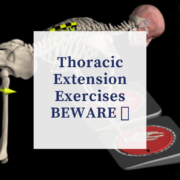
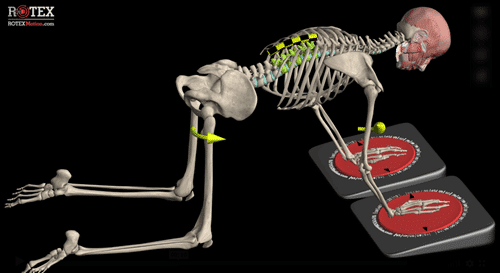
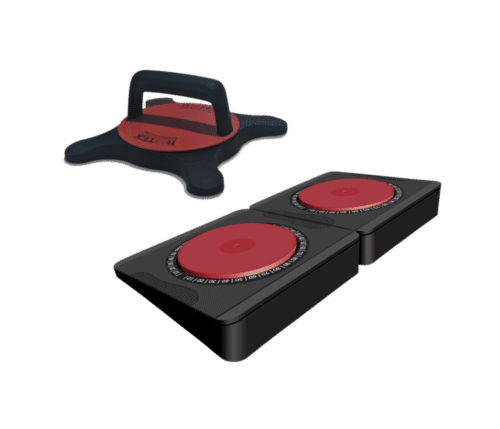
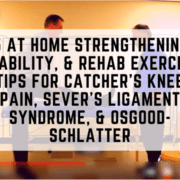


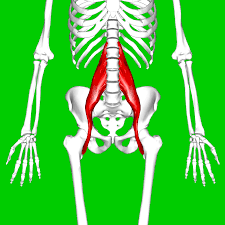
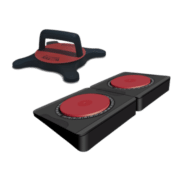

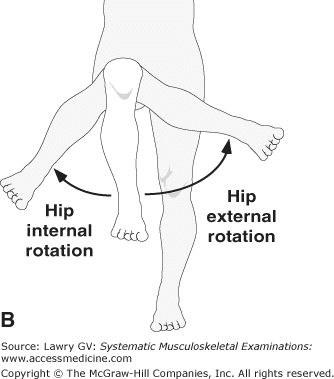
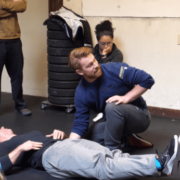


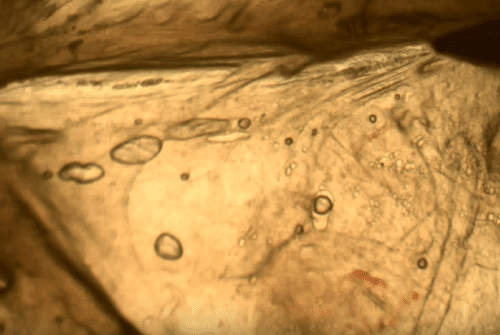

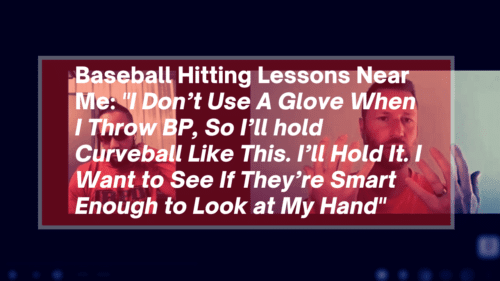
![STOP Athletic Performance Training? [VIDEO]](https://hittingperformancelab.com/wp-content/uploads/2021/03/athletic-performance-training-1-180x180.png)
![STOP Athletic Performance Training? [VIDEO]](https://hittingperformancelab.com/wp-content/uploads/2021/03/athletic-performance-training-1-300x169.png)

